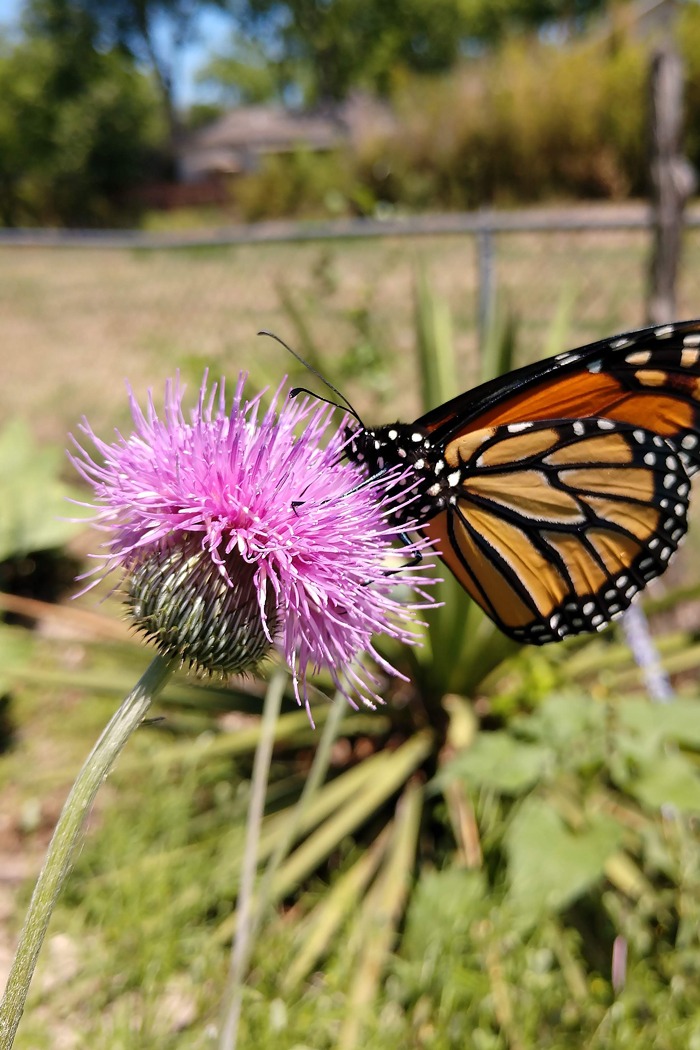The Scots recognize thistle as their national flower. Here in Texas, it’s high time to reconsider our tradition of painting all thistles as weeds.
On rangelands and farms, thistles are despised as weeds, but in the right location these plants make a useful addition to any wildflower meadow.
A cool season annual/biennial, which means it sprouts in the fall, thistle spends the winter accumulating resources as a rosette of leaves and bolts in spring to produce flowers until the heat of summer finally does it in.
Texas is home to several species of thistle with the most common native in the San Antonio region being Texas thistle (Cirsium texanum). During milder winters like the current one, Texas thistle can begin producing large purple flowers as early as February and continue producing into August, although it peaks in April and May.
All thistle leaves have prickles, but on Eurasian thistles even the silver stems are fiercely prickly. Native thistles like Texas thistle and wavy leaf thistle can be distinguished from introduced thistle species by their leaves, which have a covering of trichomes resembling hair above and a denser covering on their undersides. In addition, the stems on Texas native thistles are “undefended” — lacking prickles — making them friendlier to keep around the garden.
Texas thistle plays an outsized role in the native ecosystem, offering a wide range of wildlife benefits:

- Like all plants in the aster family, what resembles a single flower is in fact many individual flowers densely packed together. This creates a bounty of easily accessible pollen and nectar for insects.
- I often see newly hatched monarch butterflies fueling up on thistle nectar in the spring before traveling north in search of midwestern milkweed. In addition, thistle serves as a host plant to the American painted lady butterfly.
- Goldfinches use the pappus, the fluffy tuft attached to the end of each seed, as a liner for their nests.
- The seeds themselves are a favorite food of goldfinches and grain-eating birds like painted buntings.
In addition to the wildlife benefits, the tap root of Texas thistle breaks up compacted soil and the plant is rich in potassium, a useful addition to compost heaps.
While the thought of prickles might make you wary of this plant, let me remind you that many traditional landscape flowers are also armed: including roses, bougainvillea, poinciana and many others.
Texas thistles are arguably just as attractive and less time consuming. Simply watch them bloom and repeat; they reseed themselves on their own and quickly decompose once done — no pruning or fertilizing required.
Whether you end up inviting this wildflower into your garden or choose to admire it from afar, I hope you now have a newfound fondness for Texas’ native thistles.


